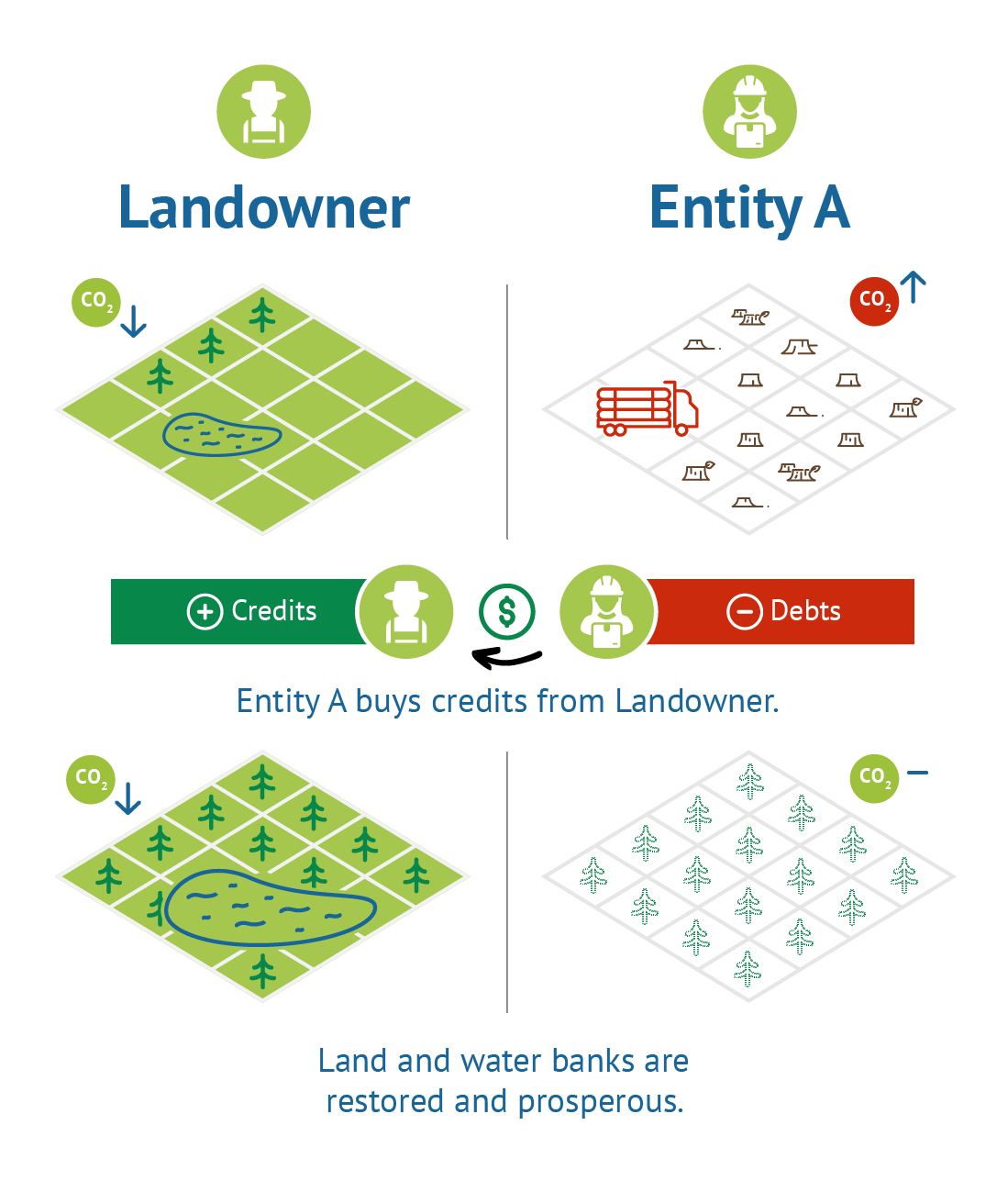ART OF THE POSSIBLE
Use the tools in your own backyard to create a revenue stream for generations to come.
Carbon credits, nutrient credits, wetlands, and stream credits, combined with the tax advantages created by a conservation easement, are the new currency, creating layers of value while you responsibly protect your land.
Stephen J. Small, the architect of the original conservation easement, suggests that your opportunity is not over when you extinguish the development rights on your land—it’s just beginning. What Small is referring to are “new techniques and new commodities that rely on natural values and natural assets that may be untapped, yet they remain inherent in your land.” Let Conservation Plus show you how to unlock the value laying dormant in your land, trees, and water.

Nutrient Credits
Nutrient banking and credits help landowners in Virginia turn land into revenue.

Carbon Credits
Nutrient banking and credits help landowners in Virginia turn land into revenue.
Mitigation Banking – The Process and Potential Revenue
Mitigation banking is a market-based regulatory and conservancy model that requires public or private entities (for example, developers) to buy mitigation credits from nearby mitigation banks—tracts of land—to offset the adverse impacts of their development projects on nearby ecosystems.
Like other banks, mitigation banks describe their transactions in terms of credits and debits. Nutrient credits are the ecological values of a mitigation bank, while debits value the ecological disturbance or destruction at a development site.
Here is a simple description of how mitigation banking works.
Suppose you have tracts of land that meet the criteria for being a mitigation bank, and the credit value of the land has been determined. In our example, Entity A has a development site, with a determined debit amount, in your locality, you can sell your credits to the developer, thus generating revenue from your land.
If you are a landowner, mitigation banking has tremendous potential for revenue generation while also responsible for protecting your land. What’s more, you can combine your mitigation credits (such as wetlands, stream, and nutrient credits) with the tax advantages created by a conservation easement to generate more revenue.
In his book, Stephen J. Small, the architect of the original conservation easement, maintains that there are other ways of exploiting the untapped natural values and natural assets inherent in your land.
Let Conservation Plus show you how to unlock the value laying dormant in your land, trees, and water.







